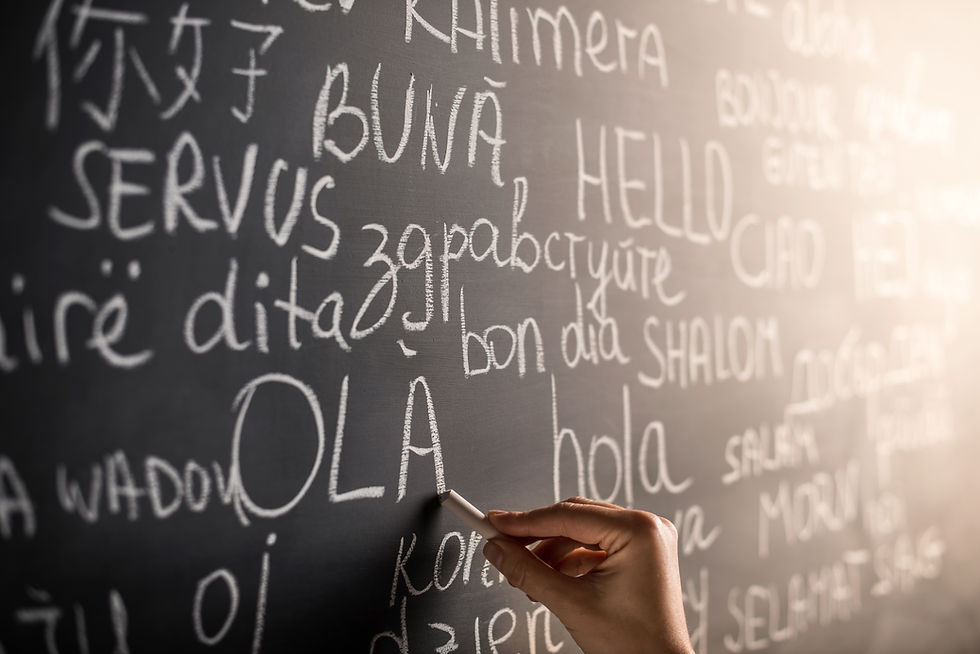
Diversity in Learning
What is diversity?
"People’s differences may relate to their race, ethnicity, gender, sexual orientation, language, culture, religion, mental and physical ability, class, and immigration status" (UNESCO, 2017, p.7).


What does diversity look like in a classroom?
Eleven key diverse backgrounds depicted by Mitchell (2017)


Age - Different age groups or generations can be found in educational institutes. Children, adolescents, Gen Z, millennials, Gen X, and the most senior learners have different values, experiences, and cultural practices. The ways they construct knowledge and engage in forms of interaction, namely student-student, student-teacher, and student-content (Anderson, 2008), are in disparity.

Race/ ethnicity/ culture - Asian, Hispanic, Caucasian, and African demonstrate different cultural classifications based on the language, traditions, and cultural origins of a group of people.

Health / physcial ability - People with disabilities face many forms of discrimination that affect them in different areas of life including learning in school. They should be included in mainstream schools due to fundamental human rights, out of fairness and social justice. Both disabled children and youth need to change the way they view each other and learn in a classroom with diversity, not the society around them (Felder, 2021).

Personality - Students have different characteristics that make them utterly unique from one another. The Big-five Model renders groupings of personal traits including openness, consciousness, extraversion, agreeableness, and neuroticism (Ashton & Lee, 2005). Acceptance of new ideas, stability of emotions, degree of enthusiasm, willingness of interpersonal interactions among students are drastically different in a classroom with diversity.

Sex and gender - The pronouns “he” and “she” to identify sex and gender are sensitive in a classroom. “Disproportionately higher rates of violence committed against students who identify or are perceived to identify as LGBTQ is a persistent problem plaguing schools in a variety of national contexts...In spite of a trend during the previous decade that saw more inclusion ...LGBT issues were generally omitted or given very little attention” (Leonardi & Staley, 2019, p.4).

Beliefs/ religion - “Different data gathered throughout the West show a significant increase in religious diversity. A variety of religions, an increasing diversity within religions and traditions and skepticism about religion in general or about some claims of religion articulate the reality” (Koukounaras-Liagkis, 2015, p.8). Education should contribute to promoting tolerance and respect for freedom of religion or belief (Jackson, 2009).

Cognitive/ intellectual ability - Learners with different cognitive abilities take different learning pace, learning styles, resources, and companions to construct meaning to the context. The very real experiences of struggling and self-doubt many persons with learning disabilities, autism, and Attention Deficit Hyperactivity Disorder (ADHD) have not yet been fully addressed (O’Donovan, 2010). Mainstream learners interacting with autistic or ADHD learners may be different from the way they interact with ordinary students.

Socio-economic status - Etiquette and behaviors of learners raised in grass-root families and in upper class families are not the same. “Socio-economic status (SES) discrimination is the predominant impediment to achieving meaningful education diversity” (Weeden, 2004, p.297). AsBIPOC suffer from socio-economic status inferiority, there is a significant educational achievement gap between different races (Weeden, 2004).

Family structure - Negative family structure stereotypes including step-parent, single-parent, cohabiting, blended, same-sex, living-apart-together families affect behaviors and cognitive development of learners. Disconnectedness that children from single-parent families and blended families experience results in less involvement in education (Anakwe et al., 2020).

ICT access - Technological accessibility, participatory media, and network stability affect the way learners have equal access to the content. There could be a participation gap (Palfrey & Gasser, 2008) where learners from low-income families cannot afford electronic gadgets to be used in classrooms.

Geographic location - Geographical location causes diversity in a classroom. Panizzon (2015) states that a significant difference between the mathematical achievement levels of indigenous and non-indigenous students. She further investigated that one of the factors these differences are rooted from is location.
